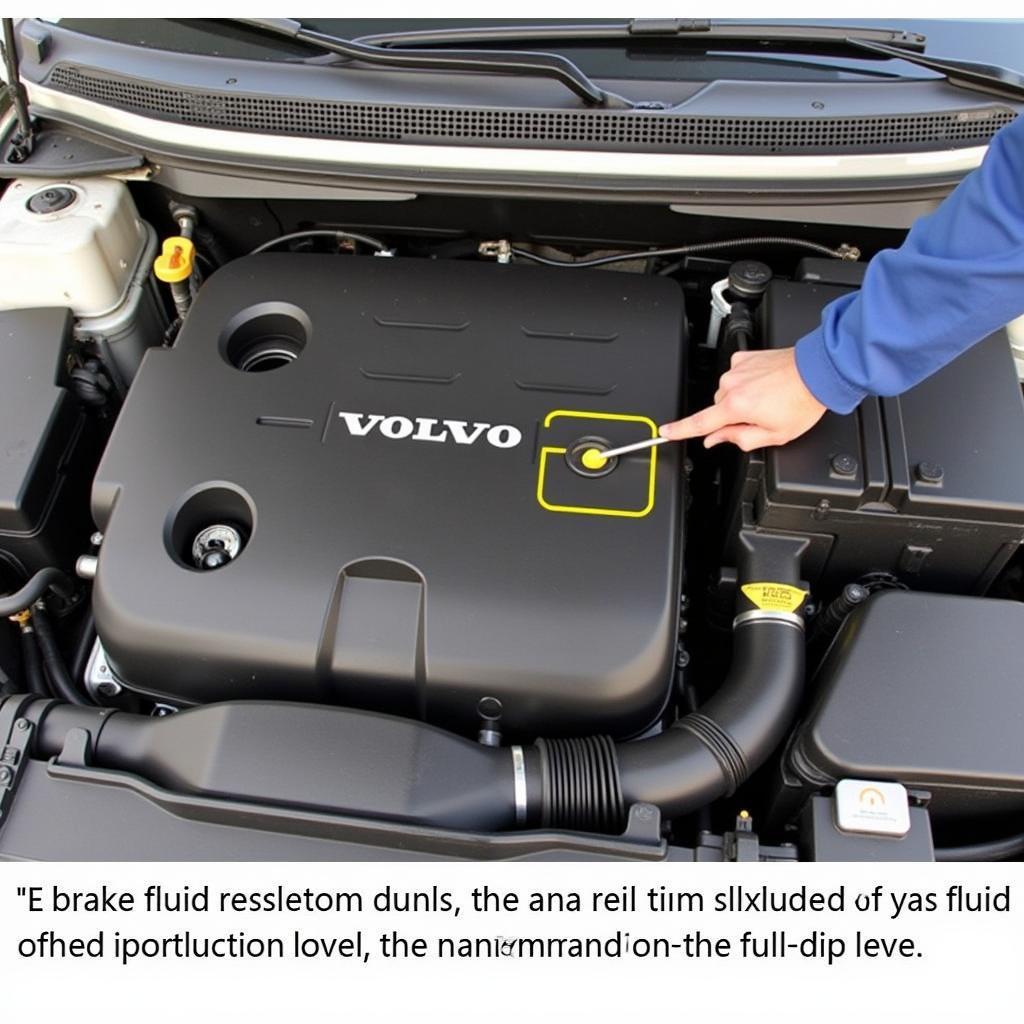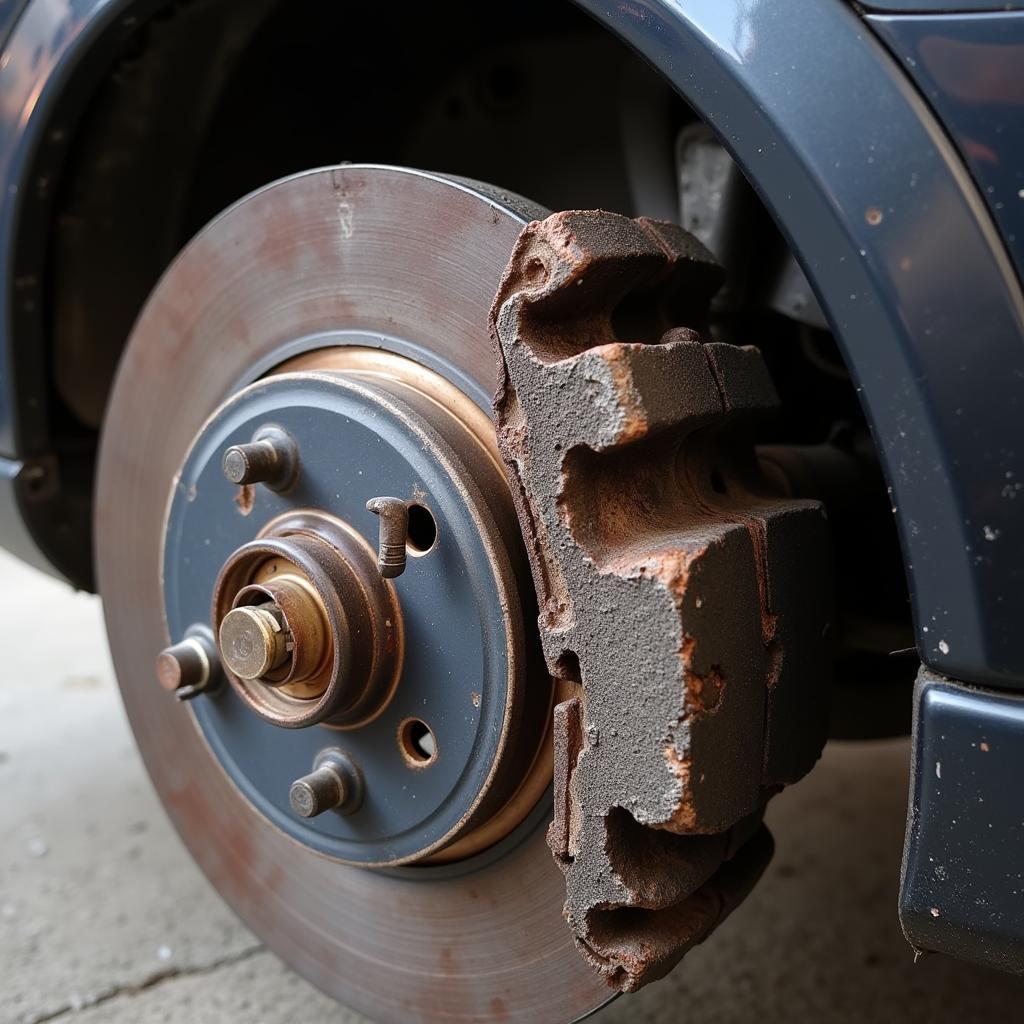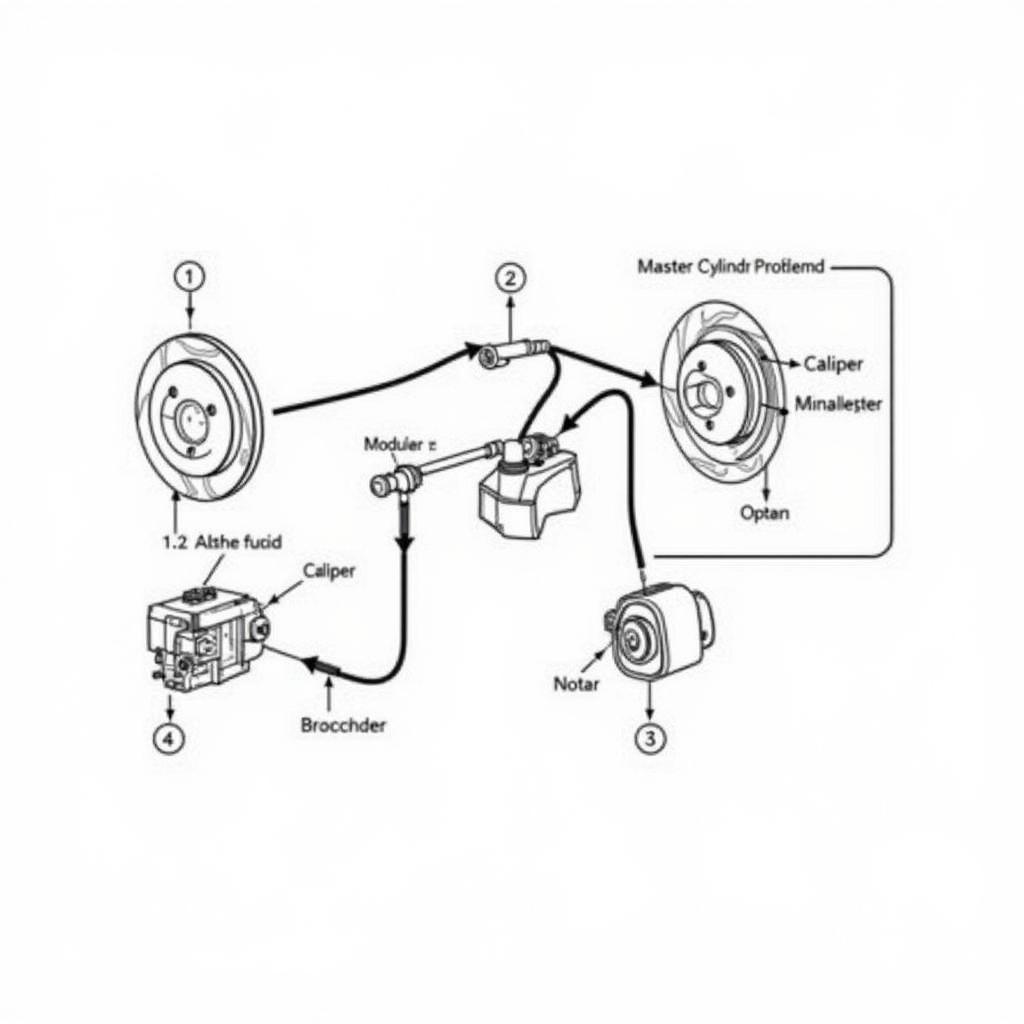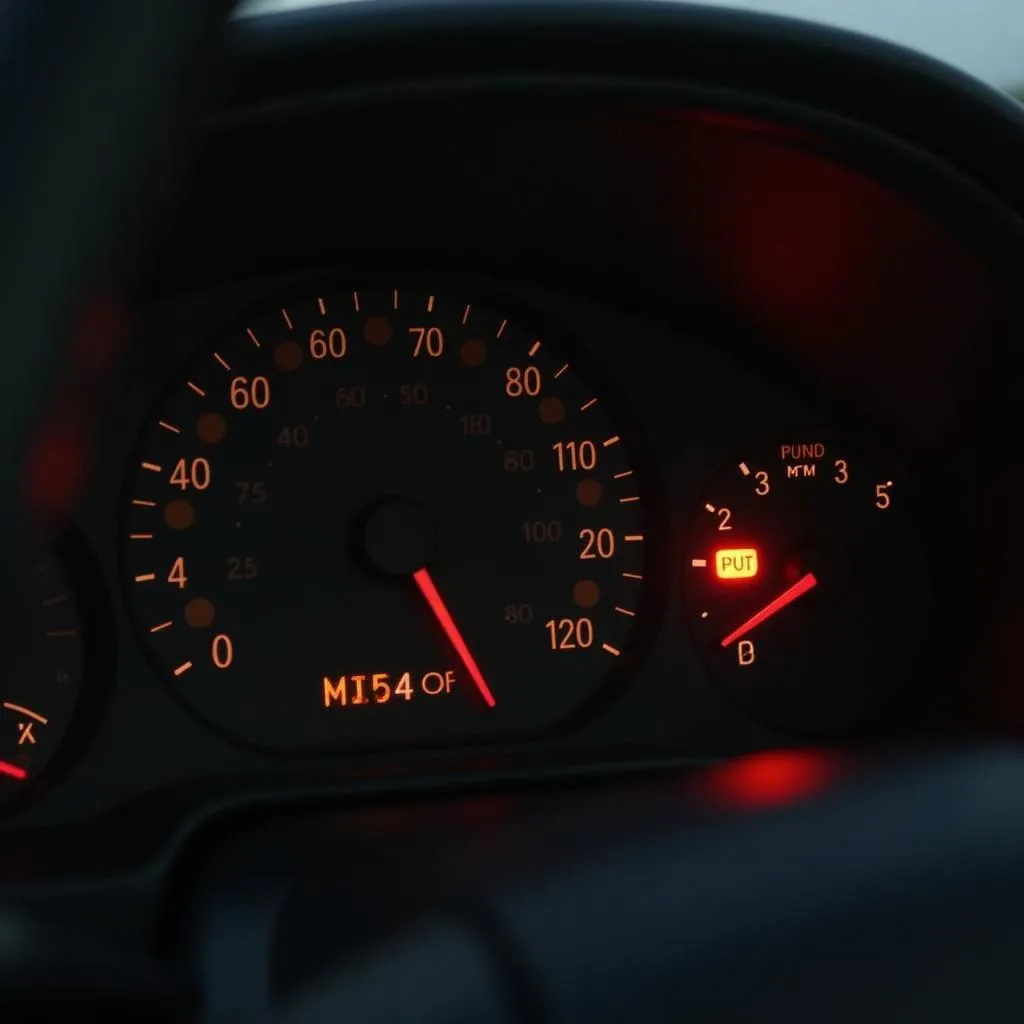The dreaded brake failure warning light on your Volvo C30 can be a heart-stopping experience. Understanding what triggers this warning and how to address it is crucial for your safety and the longevity of your vehicle. This article will guide you through the potential causes of a Volvo C30 brake failure warning, from simple fixes to more complex issues requiring professional diagnostics and programming.
The brake system warning lamp can illuminate for several reasons, not all of which indicate complete brake failure. Sometimes, a simple issue like low brake fluid can trigger the warning. It’s important to address the warning promptly to prevent further damage and ensure safe driving. More serious issues may require remote software installation and programming to rectify. Let’s explore some common causes and solutions.
Understanding Your Volvo C30’s Brake System
Your Volvo C30’s braking system is a complex network of components working together to ensure safe and efficient stopping power. From the brake pedal to the brake calipers, each part plays a vital role. Understanding these components can help you pinpoint the potential source of a brake failure warning. The system relies heavily on hydraulic pressure, and any leaks or low fluid levels can compromise its effectiveness. Regular maintenance, including brake fluid checks and pad replacements, is essential for preventing issues.
The first step when you encounter a brake failure warning is to safely pull over and assess the situation. Check your brake fluid level. If it’s low, that’s likely the culprit. However, a sudden drop in brake fluid could indicate a leak, which requires immediate professional attention.
 Checking Volvo C30 Brake Fluid Reservoir
Checking Volvo C30 Brake Fluid Reservoir
Common Causes of Volvo C30 Brake Failure Warning
Several issues can trigger the brake failure warning light. Here are some of the most common culprits:
-
Low Brake Fluid: This is often the simplest fix. Adding brake fluid to the correct level may resolve the issue. However, it’s crucial to investigate why the fluid was low in the first place.
-
Worn Brake Pads: As your brake pads wear down, they can trigger the warning light. This indicates the need for a brake pad replacement.
-
Faulty Brake Sensors: Sensors monitor various aspects of the braking system. A malfunctioning sensor can trigger the warning light even if there’s no actual problem with the brakes.
-
ABS Issues: Problems with the Anti-lock Braking System (ABS) can also trigger the warning. This could be due to a faulty ABS module, sensor, or wiring issue.
-
Brake Master Cylinder Problems: The master cylinder is a crucial component responsible for distributing hydraulic pressure. A leaking or faulty master cylinder can lead to brake failure.
If you’ve checked your brake fluid and it’s at the correct level, further diagnosis is necessary. This is where professional expertise comes in.
 Worn Brake Pads on a Volvo C30
Worn Brake Pads on a Volvo C30
Diagnostic and Programming Solutions
Modern vehicles like the Volvo C30 rely heavily on software and electronic control units (ECUs). Sometimes, the brake failure warning can be triggered by software glitches or communication errors within the system. In these cases, remote diagnostics and programming can be incredibly effective.
Using specialized diagnostic tools, technicians can remotely access your vehicle’s computer systems, identify the root cause of the problem, and even install software updates or reprogram modules to fix the issue. This can save you time and money compared to traditional troubleshooting methods.
For example, if a faulty ABS module is detected, remote programming can sometimes reprogram the module and restore its functionality without needing a physical replacement. This type of solution highlights the power and efficiency of remote diagnostics and programming in modern automotive repair.
“Remote diagnostics and programming is revolutionizing the way we approach car repairs,” says John Smith, Senior Automotive Diagnostic Technician at XYZ Auto Repair. “It allows us to quickly and accurately pinpoint issues, often without the customer needing to bring their car into the shop.”
Addressing Low Brake Fluid Warnings
If you’re experiencing a Volvo C30 low brake fluid warning, check out our dedicated article on volvo c30 low brake fluid warning for a detailed guide on how to address this specific issue. It covers everything from checking your brake fluid level to identifying potential leaks and adding fluid correctly.
 Volvo C30 Brake System Diagram
Volvo C30 Brake System Diagram
The Importance of Addressing the Brake System Warning Lamp
The brake system warning lamp is a critical safety feature. Ignoring it can lead to serious consequences. If you see this warning light, it’s essential to take action immediately. Learn more about the significance of this warning in our article on the brake system warning lamp.
Conclusion
A Volvo C30 brake failure warning should never be ignored. While sometimes a simple fix like topping up brake fluid can resolve the issue, other times more complex diagnostic and programming solutions are required. Understanding the potential causes and taking prompt action can ensure your safety and prevent further damage to your vehicle. Don’t hesitate to seek professional help when needed. Addressing the issue promptly can prevent a minor inconvenience from escalating into a major safety hazard.
FAQ
-
What should I do if my Volvo C30 brake failure warning light comes on? Safely pull over and assess the situation. Check your brake fluid level and consult a professional if needed.
-
Can low brake fluid cause the brake failure warning light to illuminate? Yes, low brake fluid is a common cause of this warning.
-
What if my brake fluid level is okay, but the warning light is still on? This indicates a more complex issue requiring professional diagnostics.
-
Can remote diagnostics and programming fix brake problems? Yes, in many cases, software issues or faulty modules can be addressed remotely.
-
How often should I check my brake fluid level? It’s a good idea to check your brake fluid level at least once a month.
-
What are the signs of worn brake pads? Squealing or grinding noises when braking, a spongy brake pedal, and reduced braking performance.
-
Is it safe to drive with the brake failure warning light on? No, it is not safe. Pull over immediately and seek professional assistance.

